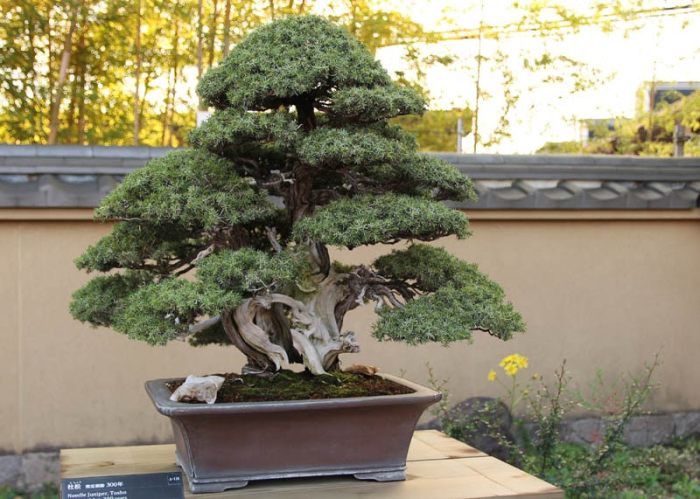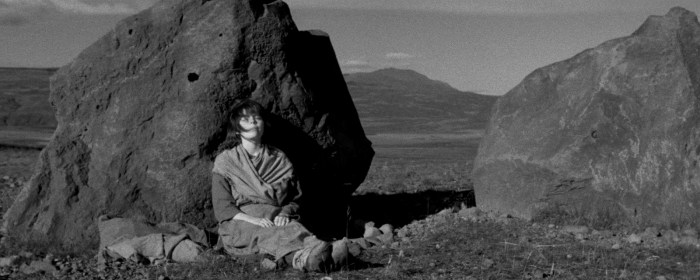The Juniper Tree Summary PDF invites you to delve into a captivating narrative, a tale that unfolds with intricate detail and an imaginative spirit. Prepare to be enthralled as we embark on a literary adventure that will transport you to a realm of folklore and enchantment.
Within this comprehensive guide, you’ll discover a thorough synopsis of the plot, unraveling the relationships between characters and the significance of the juniper tree. We’ll explore the themes and motifs woven throughout the story, shedding light on their profound impact on the narrative.
The Juniper Tree Summary
The Juniper Tree is a dark and haunting fairy tale by the Brothers Grimm. It tells the story of a young girl named Marleen who is murdered by her stepmother and buried beneath a juniper tree. Her brother, who witnessed the murder, carves a flute from the tree and plays it, causing Marleen’s bones to dance and sing.
The stepmother is eventually discovered and punished for her crime.The juniper tree is a symbol of life and death in the story. It is the tree beneath which Marleen is buried, but it is also the tree from which her brother carves the flute that brings her back to life.
The tree represents the cycle of life and death, and the hope that even in death, there is always the possibility of rebirth.The story also explores the themes of jealousy, revenge, and redemption. The stepmother is jealous of Marleen’s beauty and kills her out of spite.
The brother, driven by revenge, carves the flute from the juniper tree and uses it to expose the stepmother’s crime. In the end, the stepmother is punished for her actions, and the brother is redeemed for his role in her death.
Characters, The juniper tree summary pdf
-
-*Marleen
A young girl who is murdered by her stepmother.
-*The Brother
Marleen’s brother, who witnesses her murder and carves a flute from the juniper tree.
-*The Stepmother
Marleen’s stepmother, who murders her out of jealousy.
-*The Father
Marleen and the brother’s father, who is unaware of the stepmother’s crime.
Setting
The story takes place in a dark forest, beneath a juniper tree. The forest is a place of mystery and danger, and the tree is a symbol of life and death.
Major Events
- Marleen is murdered by her stepmother and buried beneath a juniper tree.
- The brother carves a flute from the juniper tree and plays it, causing Marleen’s bones to dance and sing.
- The stepmother is discovered and punished for her crime.
Themes and Motifs
-
-*Life and Death
The juniper tree is a symbol of life and death in the story. It is the tree beneath which Marleen is buried, but it is also the tree from which her brother carves the flute that brings her back to life.
-*Jealousy
The stepmother is jealous of Marleen’s beauty and kills her out of spite.
-*Revenge
The brother, driven by revenge, carves the flute from the juniper tree and uses it to expose the stepmother’s crime.
-*Redemption
In the end, the stepmother is punished for her actions, and the brother is redeemed for his role in her death.
Characters in The Juniper Tree

The Juniper Tree features a cast of compelling characters, each playing a significant role in the story’s haunting and evocative narrative.
The characters’ relationships and motivations are intertwined, creating a complex web of love, betrayal, and supernatural elements.
Juniper
- A young and innocent girl, the daughter of the Mother and Father
- Possesses a close bond with her brother and is deeply loved by her parents
- Her tragic death and subsequent transformation into a juniper tree serve as the catalyst for the story’s events
Mother
- Juniper’s loving and devoted mother
- Grieves deeply after Juniper’s death and seeks solace in the supernatural
- Her actions, driven by her grief, ultimately lead to the stepmother’s demise
Father
- Juniper’s father and a skilled woodcutter
- Initially distraught by Juniper’s death, he later finds solace in remarrying
- His decision to cut down the juniper tree has far-reaching consequences
Stepmother
- A wicked and jealous woman who replaces Juniper’s mother
- Envious of Juniper’s memory and mistreats the brother
- Her cruel actions lead to her own gruesome death
Brother
- Juniper’s younger brother
- Witness to Juniper’s death and the stepmother’s mistreatment
- Plays a key role in the stepmother’s demise and Juniper’s return
Witch
- A mysterious and powerful figure who assists Juniper’s mother in her quest for revenge
- Provides Juniper’s mother with a magical tool to enact justice
- Her involvement adds an element of the supernatural to the story
Setting of The Juniper Tree

The Juniper Tree is set in a remote and isolated village during the medieval period. The exact time and location are not specified, but the story’s themes and motifs suggest a setting in Central or Northern Europe.
The village is a close-knit community where everyone knows everyone else’s business. The villagers are superstitious and believe in magic and witchcraft. This belief system influences their actions and decisions throughout the story.
Cultural and Historical Background
The Juniper Tree is a German fairy tale that was first published by the Brothers Grimm in 1812. The story is based on ancient folklore and mythology, and it reflects the beliefs and values of the time period in which it was written.
During the medieval period, people believed that witches and evil spirits were real and that they could harm people. This belief led to widespread fear and persecution of witches. The Juniper Tree reflects this fear and superstition, and it shows how people were willing to go to great lengths to protect themselves from evil.
Themes and Motifs in The Juniper Tree
The Juniper Tree explores profound themes and motifs that resonate throughout the narrative. These elements provide a framework for understanding the story’s deeper meanings and its impact on readers.
One of the central themes is the enduring power of love. Despite the hardships and horrors faced by the characters, love remains a driving force. The stepmother’s cruel treatment of her stepdaughter is contrasted by the love and compassion shown by her father and the bird.
Love ultimately triumphs over evil, as the stepmother’s wickedness is punished and the family is reunited.
The Consequences of Evil
The story also delves into the destructive consequences of evil. The stepmother’s actions stem from her jealousy and hatred, leading to the murder of her stepdaughter and the subsequent downfall of her family. The tale serves as a cautionary tale, highlighting the corrosive effects of evil and the importance of resisting its temptations.
The Cycle of Life and Death
The Juniper Tree weaves a narrative around the cycle of life and death. The stepmother’s death and the subsequent transformation of her stepdaughter into a bird symbolize the inevitability of death and the possibility of rebirth. The story suggests that even in the face of tragedy, there is hope for renewal and redemption.
Symbolism in The Juniper Tree

The Juniper Tree is rich in symbolism, with various elements representing deeper meanings and contributing to the story’s understanding. The titular juniper tree, the birds, and the water are notable symbols that enhance the tale’s themes and motifs.
The Juniper Tree
The juniper tree symbolizes resilience, rebirth, and protection. Despite being cut down and burned, it miraculously grows back, providing a safe haven for the protagonist, Marleen. Its evergreen nature represents hope and the enduring spirit that triumphs over adversity.
The Birds
The birds in the story symbolize communication, freedom, and transformation. The white dove brings news of Marleen’s brother’s death, while the magpie’s chatter reveals the stepmother’s evil deeds. The birds’ ability to fly represents liberation and the possibility of escaping difficult situations.
The Water
Water in The Juniper Tree symbolizes purification, renewal, and life. Marleen’s tears extinguish the fire that burns the juniper tree, symbolizing her ability to overcome grief and adversity. The well water brings the protagonist’s brother back to life, representing the power of hope and the regenerative nature of water.
Cultural Significance of The Juniper Tree

The Juniper Tree is a timeless tale with deep cultural roots, originating from folklore and mythology. It reflects the beliefs and values of the cultures that have passed it down through generations.
Folkloric Origins
The story draws upon common folkloric elements found in many cultures worldwide. The motif of a murdered child returning to seek revenge is a recurring theme in folklore, symbolizing the power of justice and the consequences of wrongdoing. The stepmother figure represents the archetype of the evil stepmother, a common character in fairy tales and folklore.
Mythic Parallels
The Juniper Tree also resonates with ancient myths. The tree itself is a sacred symbol in many cultures, representing life, death, and rebirth. The story’s central theme of resurrection parallels the myth of Persephone, the Greek goddess who descends into the underworld and returns to the world of the living each spring.
Cultural Values
The story conveys important cultural values, such as the importance of family, justice, and the triumph of good over evil. It teaches the consequences of greed, envy, and cruelty, and the power of hope and resilience in the face of adversity.
To further explore the narrative of The Juniper Tree, consider utilizing a very big branch worksheet to delve into the symbolism and themes presented in the story. This resource provides insightful prompts and discussion questions that can enhance your understanding of The Juniper Tree summary pdf.
The story’s enduring popularity reflects its timeless appeal and its relevance to human experience across cultures and generations.
Literary Devices in The Juniper Tree: The Juniper Tree Summary Pdf

The Juniper Tree employs a range of literary devices to enhance its narrative and thematic impact. These devices include foreshadowing, irony, and imagery, which contribute significantly to the story’s effectiveness and resonance.
Foreshadowing
Foreshadowing is used to subtly hint at future events, creating a sense of anticipation and suspense. One example is the repeated mention of the juniper tree throughout the story. The tree’s presence in various scenes foreshadows its later significance as a symbol of rebirth and renewal.
Irony
Irony adds layers of complexity and depth to the story. One instance of irony is the stepmother’s cruel treatment of her stepdaughter, Marilene. Her actions are ironic because she claims to love her own children but treats Marilene with disdain.
Imagery
The Juniper Tree is rich in vivid imagery that appeals to the senses. The descriptions of the forest, the birds, and the seasons create a sensory experience that immerses the reader in the story’s setting. For example, the “sweet birdsong” that fills the forest evokes a sense of peace and tranquility, contrasting with the stepmother’s harsh treatment of Marilene.
User Queries
What is the significance of the juniper tree in the story?
The juniper tree serves as a powerful symbol throughout the story, representing both life and death. It is the site of the stepmother’s evil deeds and the place where Juniper’s brother is murdered. However, it also becomes a symbol of hope and renewal as Juniper’s body transforms into the tree.
How does the setting influence the story?
The story takes place in a remote and isolated village, which contributes to the sense of mystery and danger. The harsh natural environment reflects the challenges faced by the characters and the themes of survival and resilience.
What are the major themes explored in The Juniper Tree?
The story explores several important themes, including the power of love and forgiveness, the consequences of evil, and the cycle of life and death. These themes are woven throughout the narrative and give the story its depth and emotional resonance.


